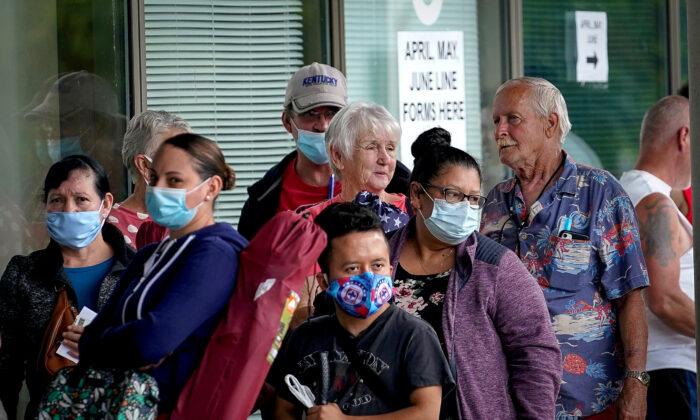A growing number of major businesses have announced intentions to lay off employees or install a hiring freeze amid broader economic concerns and recent trends.

It is not all about reducing the number of workers. Uber, Meta, Spotify, and artificial intelligence startup Olive AI have slowed down their hiring efforts or stopped taking applications entirely.
“Employers are beginning to respond to financial pressures and slowing demand by cutting costs. While the labor market is still tight, that tightness may begin to ease in the next few months,” said Andrew Challenger, senior vice president of Challenger, Gray & Christmas, an executive outplacement firm, in a statement.
According to recent data, the small business community has also been cutting jobs.
“As inflation continues to dominate business decisions, small business owners’ expectations for better business conditions have reached a new low,” said NFIB Chief Economist Bill Dunkelberg in a statement. “On top of the immediate challenges facing small business owners including inflation and worker shortages, the outlook for economic policy is not encouraging either as policy talks have shifted to tax increases and more regulations.”
Lisa Speransky, the founder and director of Ivy Tutors Network, a New York City-based tutoring firm, has started the process of cutting staff. Her small business recently consolidated its management team, reducing it from four to three. Moreover, the education firm will begin to raise prices in September.
“Soaring prices and salaries are certainly frightening,” she told The Epoch Times, adding that she is beginning to witness “middle class and upper middle-class families hesitate a bit about spending on tutoring, more than we did before.”
But Vimal Patel, the president of Q Hotels, a hotel management firm in Louisiana, is still unable to fill positions and working understaffed. Even though staffing levels are lower, labor costs are more amid climbing price inflation.
“Inflation is causing wage increases, so even though the workforce is less, the payroll is higher because of the 30 to 40 percent wage increase,” Patel told The Epoch Times. “Energy rates, cost of supplies, and cost of insurance have all gone up, so we have no choice but to raise prices.”
Future expectations are rather bleak for Patel, adding that higher interest rates, soaring costs of operations, and rampant price inflation are weighing on smaller outfits.
“Small business owners are not going to be able to make profits. They will be barely able to make ends meet. So, it’s going to be stressful for small business owners in the next couple of years,” he added.
Market experts warn that if this intensifies and becomes the top trend in the labor market in the second half of 2022, it could hasten a recession.
Federal Reserve Chair Jerome Powell had warned that current conditions are “unsustainably hot,” telling reporters during a post-Federal Open Market Committee (FOMC) news conference that “you really cannot have the kind of labor market we want without price stability.”
When the U.S. central bank tightens monetary policy, it typically harms the labor market because it generally results in shrinking business activity, sluggish consumer spending, and preventing companies from expanding operations. In addition, a rising-rate environment has helped increase the odds of a recession as many Wall Street firms and economists have either made a downturn their base case or raised the chances of recession within the next two years.
“A potential recession would negatively affect unemployment significantly, so employees should start preparing for one ahead of time. The biggest worry for employees is the chance of layoffs,” said Jill Gonzalez, a WalletHub analyst, in a statement.
That said, after last week’s strong jobs report, New York Fed Bank President John Williams and Atlanta Fed Bank President Raphael Bostic reiterated the position that a 75-basis-point rate hike would be justified at this month’s FOMC meeting as the labor market continues to be resilient.
The current unemployment rate stands at 3.6 percent, the lowest since February 2020.





